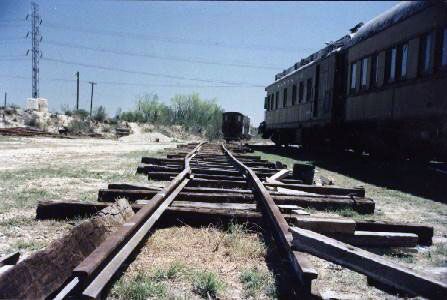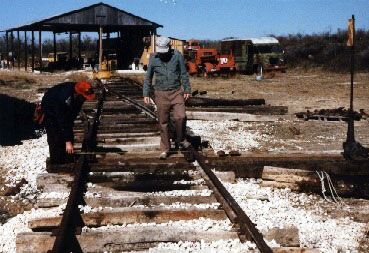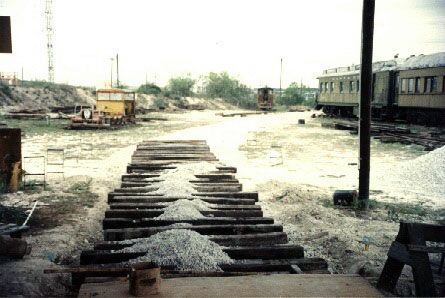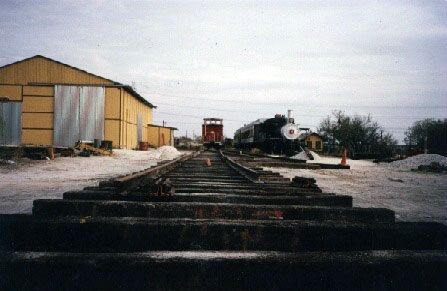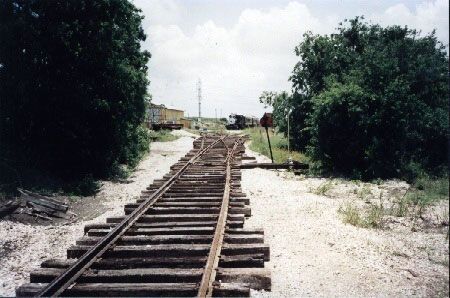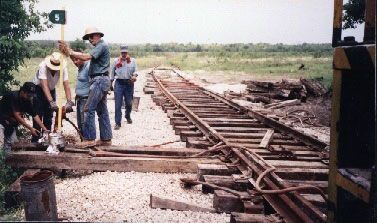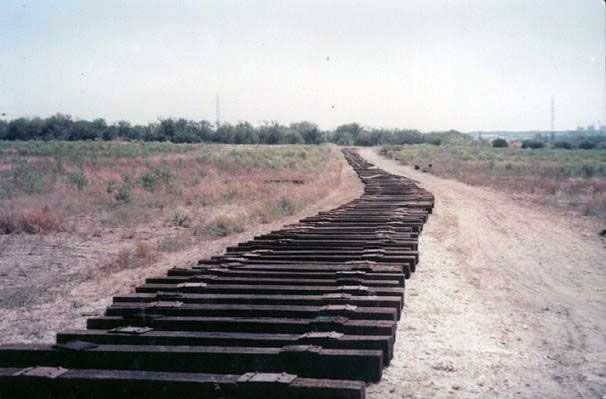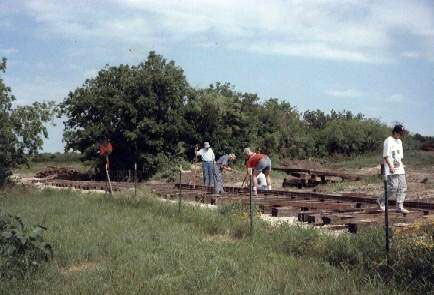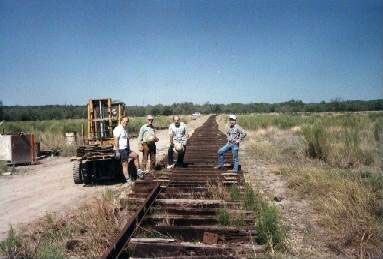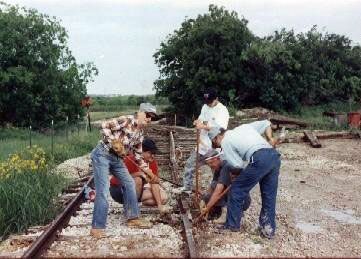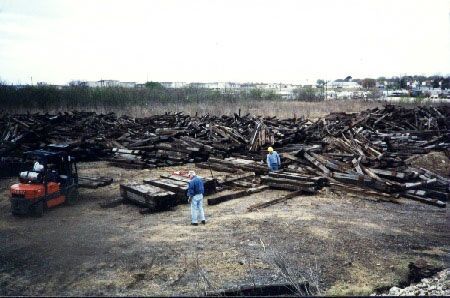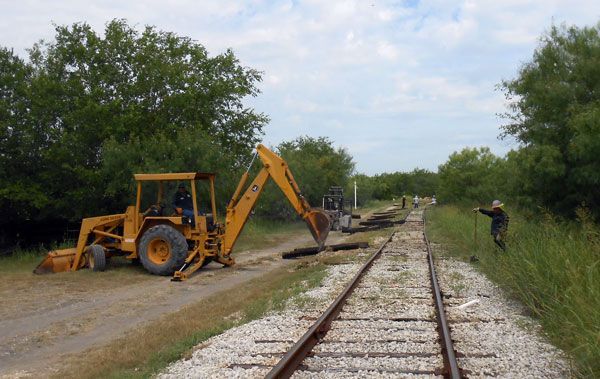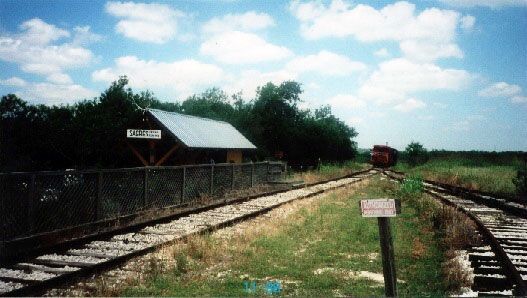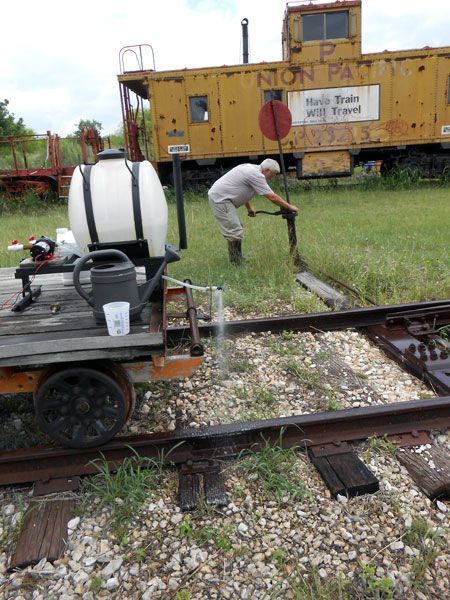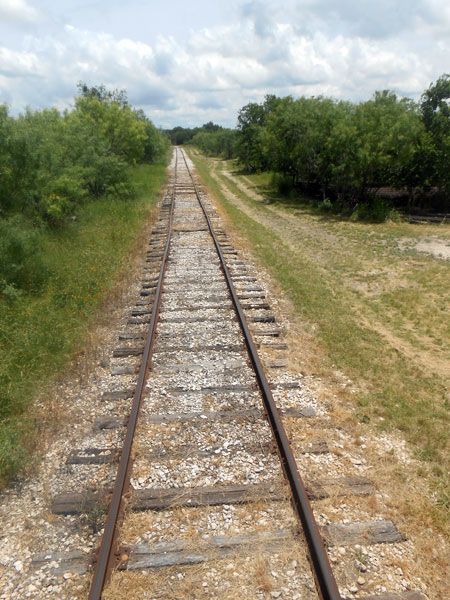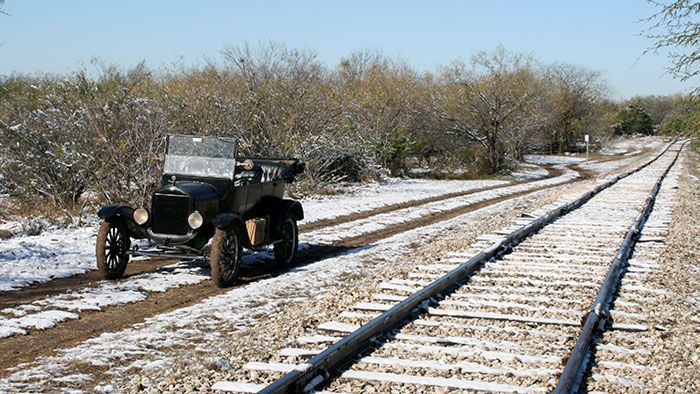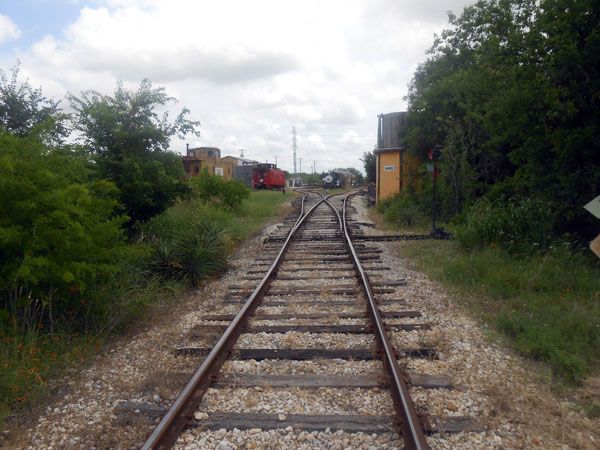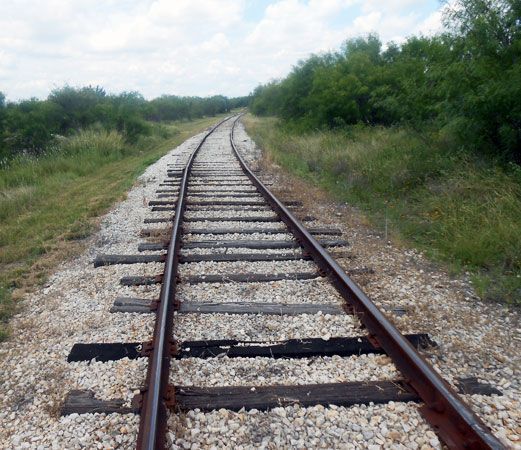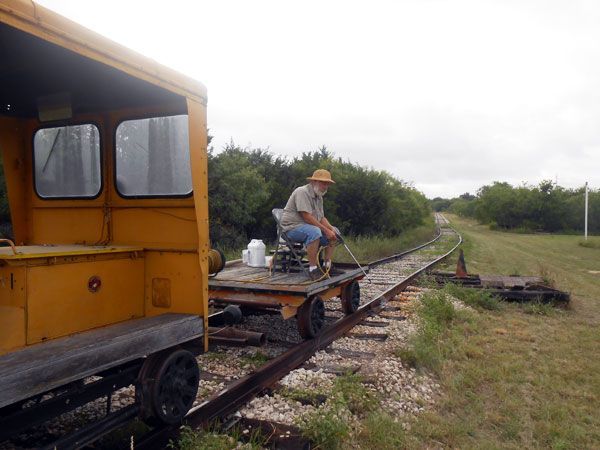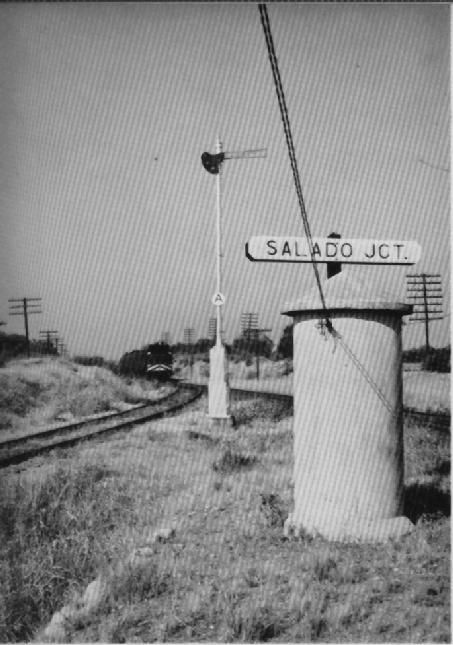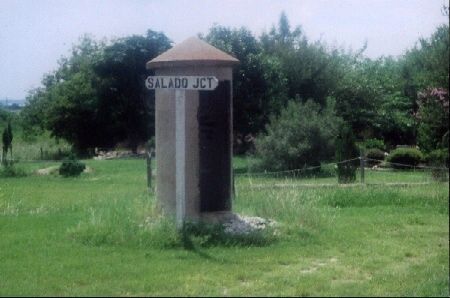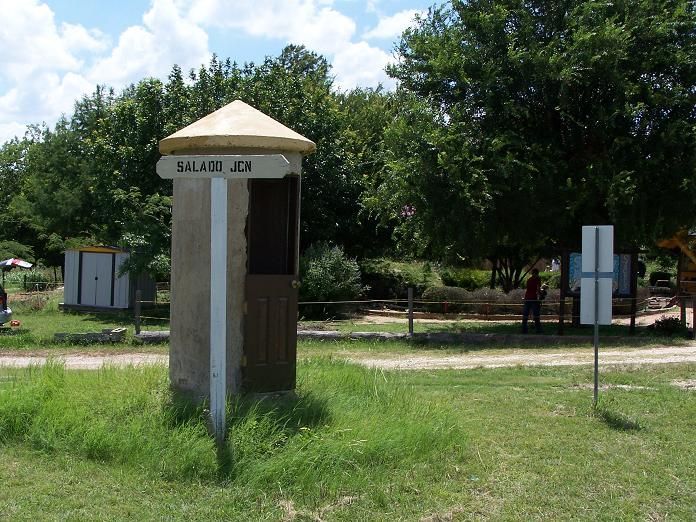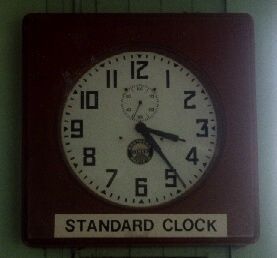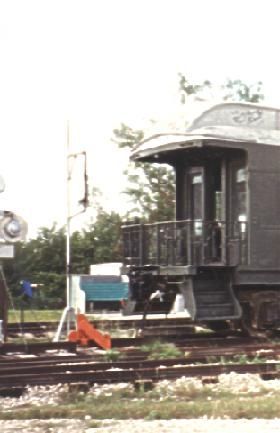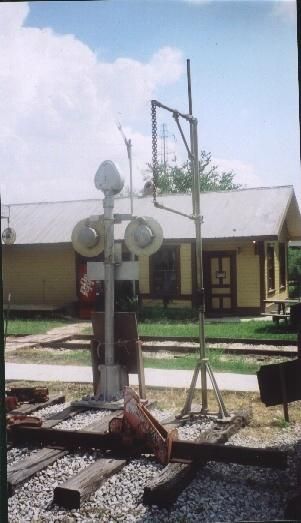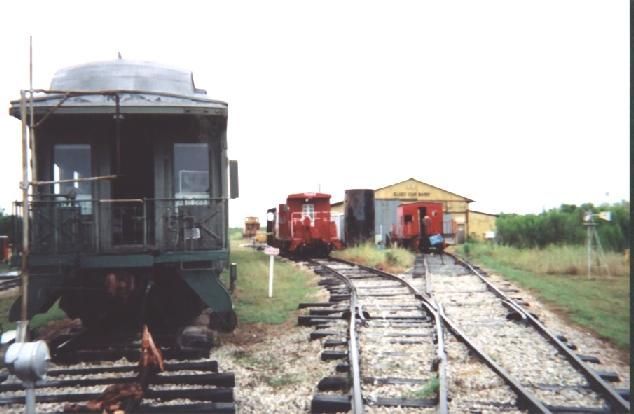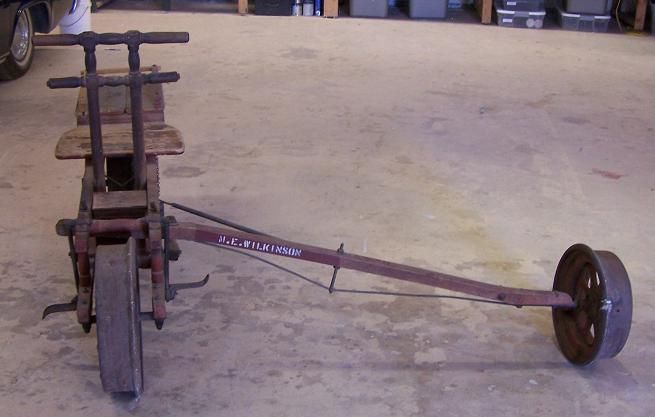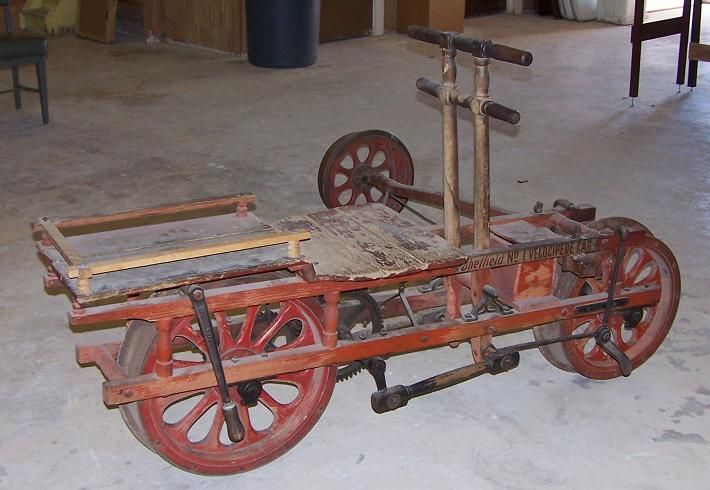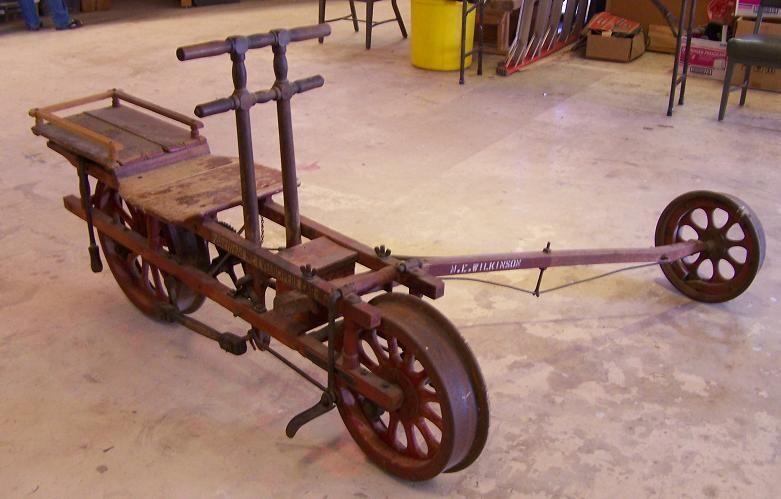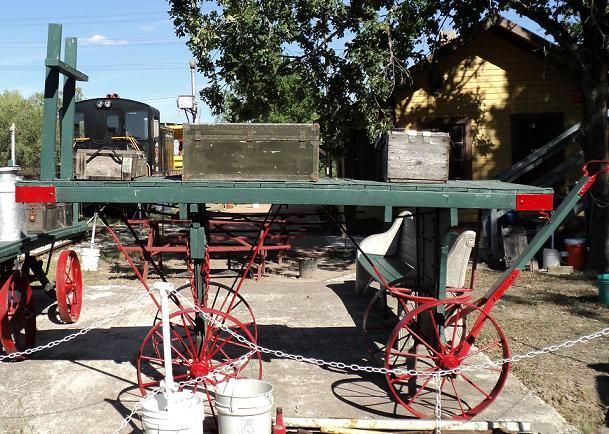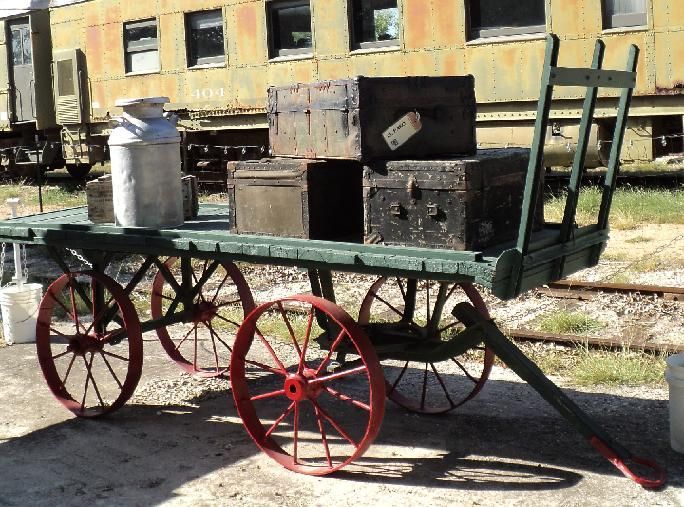Longhorn and Western
Miscellaneous Railroad Items
Track Work
Track work is an essential part of all railroading. It is also both un-glamorous and back breaking work. When TTM moved to this site in 1969 it was a completely undeveloped part of what was then called the north east preserve. The bulk of the area has become McAllister Park. Both the museum and the adjacent baseball sports park use sections of the land as part of the San Antonio parks system. Track work began here long before we had any equipment to put on it. It would be quite some time before our 0-4-0 switcher, #1, would be moved from our former location down town.
Modern railroads use enormous amounts of equipment to lay and maintain track. Although the Union Pacific mainline is tantalizingly close to the museum, just across the road in fact, we have never managed to get a connection to it. We get to see all the latest equipment in use so close and yet so far. We do everything the old fashioned way and have very little in the way of equipment.
While there may be some intrinsic value in taking part in such work using the most traditional methods, it is, surprise, surprise, quite hard to find volunteers to do it. It is also requires trained supervisors. Much of the work is simple hard toil but it is essential to get it right. Our railroad may not be as long as others but its just as wide and, all things considered, carries far more people than modern railroads than concentrate almost exclusively on freight traffic.
Keeping our tracks weed free is quite a challenge. The work has become a lot easier with the introduction of a large weed spraying unit which can be moved around our mile and a half of tracks on a small flat car in front of our rail motor car. This and subsequent weed eating have the tracks looking their best.
Salado Junction Railroad Phone Booth
This old railroad phone booth stood on the Southern Pacific lines between San Antonio and Victoria. Such concrete booths had locked doors and were exclusively for the use of railroad personnel, and there would be a special padlock on the door to keep unwanted folks out. Ours no longer has its door, nor does it have its telephone. There is a similar structure at the railroad museum in New Braunfels which is more complete. We got our through the good offices of former S.P. track supervisor, Pat Budd, who has been a museum volunteer for many years.
Southern Pacific Standard Clock
Pat Budd donated this "Standard Time Clock", which used to be in the depot in Tucumcari, New Mexico. Standardized time and time zones are a gift to the world from the earliest days of railroading. If each town or area ran its clocks even a few minutes apart, it could and in fact did lead to horrendous accidents, as trains would be allowed to enter the same stretch of rail by track controllers who genuinely thought it was clear, which it should have been, according to their schedule. A variance of just two minutes at different points could have horrific consequences.
Mail Pick-Up and Drop-Off Stand
Delivery of mail became infinitely faster and more reliable with the advent of regular train schedules. Smaller post offices might not rank an actual stop, as it would obviously take for ever for any train to stop every few miles. So equipment was devised to allow for mail to be picked up and dropped off while the trains were in motion. This particular mail stand stood just a few hundred yards from the museum, at the corner of Wetmore and Thousand Oaks. To this day the old, completely un-modernized, post office is still there, doing business as if it was the 1920s. Regrettably, the old depot which was also there is long gone. This stand's claim to fame and a place in history books is that it was the last one ever used for such mail operations in the USA, an event that occurred in the early 1960's.
Railroad Velocipede - Hand and Foot Powered Car
This particular model dates back to the 1890s. It was acquired by the Missouri, Kansas & Texas Railroad and assigned to M.E. Wilkinson near Denton in the north of Texas. He was most likely a section foreman, which means he was in charge of the track gang that maintained a specific section of track. The car would be used to perform regular track inspections during scheduled lulls in trains going through. It was light weight enough for one person to quickly remove it from the tracks if any unscheduled movements occurred on the rails.
REA - Railroad Express Agency Luggage Carts
The REA - the Railroad Express Agency - was the Fed Ex of its day. It's employees loaded and unloaded light parcel freight onto and off trains. They drove distinctive green delivery vans to pick up and deliver these items to communities around even the smallest railroad depot. They also picked up luggage for people traveling by train and delivered it to their destinations. This was when people had much heavier suitcases and trunks and wore more formal attire, and even the railroad journey could last days. Green REA Carts such as these were once common place items at every station.
